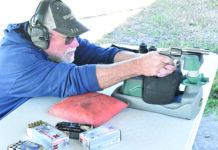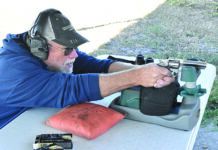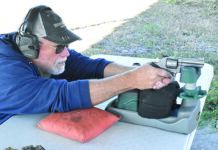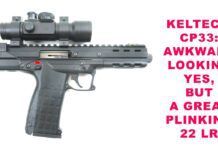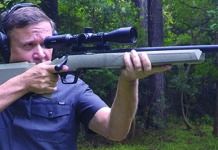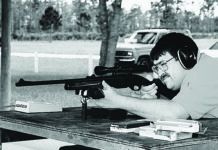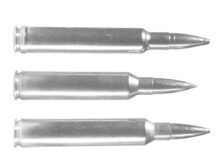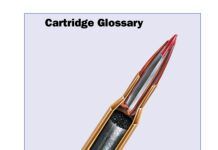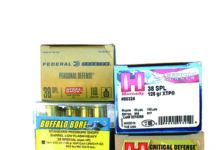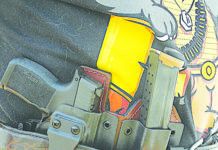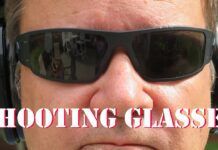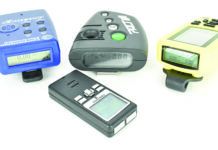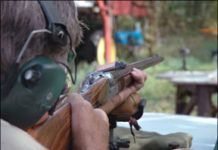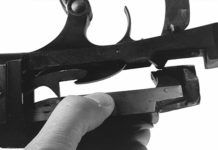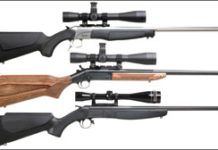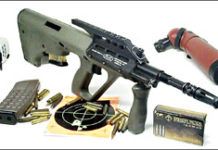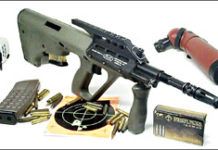Working the Winchester 88
Many of us miss Winchester's Model 88. First revealed in 1955 as "a bolt action rifle with a lever," it shared few features with levered Winchesters made up to that time. It had no external hammer, no side-loading tubular magazine limited to flat-nosed rounds, and no rear breech lock-up. It had a full-length stock to dampen barrel vibrations, a removable box magazine that allowed hunters to take advantage of better ballistics pointed bullets provided, and combined lever/trigger assemblies, which eliminated the pinched fingers and snagged gloves known so well to lever gunners. The 88's biggest departure from Winchester's lever-action tradition, however, was its rotary bolt head incorporating a trio of locking lugs that was very close to Mauser's design of the late 1880s.
The Marlin 336 Series Lever-Action Rifles
Sabatti 450/400: Affordable Double Rifle, Perfect Caliber
A double rifle for $5500? It can't be very good, we thought, when our neighbor phoned us to tell us he had just bought an Italian Sabatti Model 92 Deluxe rifle, new from Cabela's for that price, in caliber 450/400.
The cartridge is an excellent one for double rifles. It's known as the 450/400 3-inch or the 400 Jeffery. There is also a 3.25-inch version that was originally a blackpowder cartridge, but the 3-inch version was never factory loaded with black powder. It is one of the lower-pressure British cartridges, along with the 470 and 360 No. 2, and thus is an excellent choice for a double rifle, especially if it's to be used in extreme heat. The cartridge was one of the more popular all-around cartridges for hunting use when it was introduced in 1902. Its popularity suffered when the 375 H&H Magnum came along a few years later, but the 400 Jeff throws a heavier bullet, 400 grains versus 300, and some hunters prefer that.
We went to look at our neighbor's rifle, and then arranged to shoot it. What follows are our impressions and observations of what we now consider to be a bargain.
Savage 110 GXP3 .223 Remington, $449
Working the Savage 1899 Rifle
In 1893, Savage patented the first truly hammerless lever-action rifle. This streamlined rifle differed from the Winchester and Marlin lever-action rifles of the same era in that it used a rotary magazine that allowed the use of ballistically superior pointed-nose bullets. All of the other lever-actions of this period used a tubular magazine. The tubular magazine meant that cartridges were fed into the tube with bullet nose to primer, necessitating the use of blunt-nosed bullets to avoid a chain-fire situation. By 1895, Savage's rifle was in full production as the Model 95. Around 1899, a few small design improvements were made and, since then, the design has remained relatively the same—one of the "bread and butter" firearms of this company.
Three Single-Shot Rifles from CVA and H&R in 308 and 30-06
The concept of a single-shot rifle for modern usage goes back quite a few years. Despite the advent of repeating firearms, the single-shot rifle has always held its own, from the Sharps down to the H&R Ultra rifle tested here. Many makers have put together some very fine and also some not-so-fine single shots on a great variety of actions. This test looks at three relatively simple rifles. Two of them are from CVA in the form of the 308-caliber Apex CR4502S ($652) and the less-expensive Scout in 30-06 ($340). We also acquired one of the U.S.-made H&R 1871 Ultra Hunters in 308 (SB2-808, MSRP $374). We tested the 308s with three types of ammunition, Remington 180-grain Core-Lokt, Winchester 150-grain Power Point, and Winchester Supreme 168-grain HPBT match. In the 30-06 CVA Scout we used Winchester 180-grain Power-Point Plus, some M2 ball from Lake City Arsenal, and Speer Nitrex 165-grain JSP. Could the H&R compete against the Spanish-made CVAs? Here's what we found.
Working the Browning Model 81 Lever-Action Rifle
I must admit that Browning has one strong reason in its favor for not telling the company's customers how to take their BLRs apart. Disassembling and reassembling this rifle should only be done by a knowledgeable, qualified gunsmith—even for cleaning—because doing it incorrectly may cause damage to parts. So Browning chooses to avoid all references to taking the gun apart. In fact, it says in the gun's manual, "If your rifle requires service, contact your local recommended Browning Firearms Service Center." This means gun shops will be getting these rifles in for repairs and cleaning, and you need to know how to take them apart the right way, or you will find yourself telling your customer that you are sorry, but he is going to have to wait until a new part arrives. Here's what you need to know about fixing the lever-action Model 81 Brownings:
Steyr Arms SSG69 PII 308 Winchester, $1899
Tactical bolt-action rifles are pretty easy to spot. Typically, they utilize a composite stock with pronounced pistol grip, oversize bolt handle and fire from a heavy barrel. The military models are camouflage or earth tone in color, and the law-enforcement models are usually black. Accuracy, strength, and simplicity are key attributes. Can a tactical rifle serve as a hunting rifle? Were not saying one cant. Its just that a tactical rifle typically weighs more than a hunting model. The heavy barrel enhances the ability to maintain accuracy throughout repeat fire and excessive heat.
In addition, tactical rifles tend to be more suitable for longer distance shots and offer ergonomics that favor the prone position or other means of support. Compared to hunting rifles that feature adornments such as engravings or fancy wood, the tactical rifle is stark and businesslike. In this test, we evaluated a 308 Winchester aimed at the law-enforcement market and the $1899 Steyr Arms SSG69 PII 308 Winchester.
Bullpup Showdown: Steyr AUG Vs. MSAR and the FN FS2000
Bullpup Showdown: Steyr AUG Vs. MSAR and the FN FS2000
Bushmaster Patrolman’s Carbine .223 Rem., $1230
Our Bushmaster Patrolman’s Carbine was yet another interpretation of the flat-top AR. The base price of this model was $1230 including the Fiberite Six Position adjustable stock and A2 front sight. But we picked several options to bring it into spec with our other carbines. A 4 Rail Free-Floater Forend (YHM-9479) was in place plus an Ergo Sure Grip (ARG- KIT). With another Ergo Sure Grip clamped to the bottom forend rail (ARG-FWD), we thought we were seeing double.
The forend grip could be placed anywhere along the bottom rail as long as it was far enough forward to clear the magazine. A large knob with a coin or screwdriver slot and knurled edges held the grip in place. With two pistol style grips in place, our stance took on a narrower profile. This would be especially advantageous when traveling down a hallway or taking cover in a tight space. The forend itself appeared to be fatter. This was because the rails were covered with slip-on Sure Grip rail covers featuring the Bushmaster logo, (SCH-6L). The rail covers created a smooth, rounded feel to the forend and increased its overall width by about 0.3 inches.
Troubleshooting the H&K MP5
American police and other law-enforcement professionals are employing the H&K MP5 with increasing frequency for potentially or obviously dangerous encounters. It has replaced the shotgun in many patrol cars, the venerable lever action in prison guard towers, and is even found in the hands of U.S. Department of Agriculture rangers for varmint and predator control. A sound-suppressed version, the SD model, is sometimes fitted with telescopic sights and used as a short-range rifle to shoot out tires on suspects vehicles prior to a raid.


